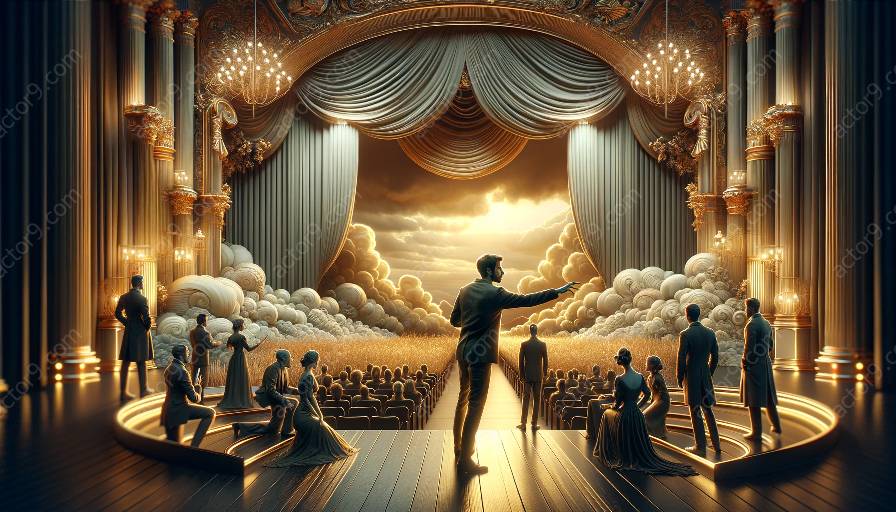Stage directions play a crucial role in guiding actors and shaping the overall production of a theatrical work. They provide essential details about movements, positioning, and emotions, enriching the storytelling and enhancing the experience for both performers and audiences. Let's explore some notable examples of stage directions in well-known theatrical works and their impact on acting and theater.
1. Hamlet by William Shakespeare
In Act III, Scene IV of Hamlet, the stage direction 'Enter Ghost' creates a powerful moment as the ghost of Hamlet's father appears before him, setting the tone for the supernatural elements of the play. The direction 'Exeunt Rosencrantz and Guildenstern' effectively conveys their departure, providing a visual and spatial context for the action.
2. A Streetcar Named Desire by Tennessee Williams
Williams' stage directions in A Streetcar Named Desire are notably detailed, capturing the emotional nuances of the characters. For instance, the direction 'He seizes her arm' in a crucial scene between Stanley and Stella vividly portrays the intense emotions and physical dynamics, adding depth to the characters' interactions.
3. The Glass Menagerie by Tennessee Williams
Another work by Tennessee Williams, The Glass Menagerie, features evocative stage directions that contribute to the play's poignant atmosphere. The direction 'The room is filled with a great onslaught of music' sets the mood and reflects the characters' inner turmoil, demonstrating the impact of sound and atmosphere on the overall theatrical experience.
4. A Raisin in the Sun by Lorraine Hansberry
Hansberry's A Raisin in the Sun includes stage directions that provide insights into the characters' emotions and interactions. The direction 'RUTH dries her eyes and tries to smile' conveys Ruth's inner struggle, offering valuable cues for performers to embody the complexities of their roles and engage the audience authentically.
5. The Crucible by Arthur Miller
In The Crucible, Miller's stage directions enhance the tension and drama of the play. The direction 'She is shivering as she reaches for the cloak hanging on the back of a chair' paints a vivid picture of the character's state of mind and physicality, deepening the audience's connection to the unfolding events.
These examples illustrate how stage directions contribute to the depth and authenticity of theatrical works, offering valuable guidance for actors while immersing audiences in the rich tapestry of storytelling. By paying attention to stage directions, actors and directors can unlock the full potential of a play, bringing its characters and themes to life with compelling realism and emotional resonance.















































